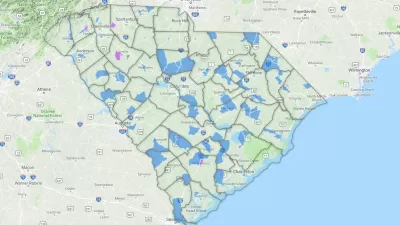The Brookings Institution has provided a data-driven examination of the subject of poverty in the United States, to provide the kind of policy nuance and detail missing from the 2016 presidential campaign.

Elizabeth Kneebone writes an article to illuminate a pressing policy issue that was largely absent from discussion on the campaign trail this year: poverty. Regardless of that lack of conversation, according to Courtin, "both parties do have some serious ideas about how to combat poverty."
Kneebone describes the two very different poverty approaches from each party:
Democratic presidential nominee Hillary Clinton has put forward a policy agenda that includes proposals such as increasing affordable housing options, addressing persistently poor places, and expanding tax credits for working families with children. While Donald Trump has yet to provide specifics on his antipoverty ideas, a proposed Republican playbook on poverty, opportunity, and upward mobility can be found in House Speaker Paul Ryan’s Better Way policy agenda, announced earlier this summer. The two agendas represent distinct visions of an antipoverty/pro-opportunity federal policy agenda and highlight potential elements ripe for bipartisan debate and action.
Following that explanation of the political parties' approach to poverty, Kneebone takes a deep dive into the existing data on poverty. The data reveals some surprising narratives and breaks down into a series of data-rich maps and infographics.
FULL STORY: Poverty crosses party lines

Pennsylvania Mall Conversion Bill Passes House
If passed, the bill would promote the adaptive reuse of defunct commercial buildings.

Planning for Accessibility: Proximity is More Important than Mobility
Accessibility-based planning minimizes the distance that people must travel to reach desired services and activities. Measured this way, increased density can provide more total benefits than increased speeds.

World's Largest Wildlife Overpass In the Works in Los Angeles County
Caltrans will soon close half of the 101 Freeway in order to continue construction of the Wallis Annenberg Wildlife Crossing near Agoura Hills in Los Angeles County.

New York Passes Housing Package Focused on New Development and Adaptive Reuse
The FY 2025 budget includes a new tax incentive, funding for affordable housing on state land, and support for adaptive reuse and ADUs.

LA Metro Board Approves New 710 Freeway Plan
The newest plan for the 710 corridor claims it will not displace any residents.

Austin’s Proposed EV Charging Rules Regulate Station Locations, Size
City planners say the new rules would ensure an efficient distribution of charging infrastructure across the city and prevent an overconcentration in residential areas.
City of Costa Mesa
Licking County
Barrett Planning Group LLC
HUD's Office of Policy Development and Research
Mpact Transit + Community
HUD's Office of Policy Development and Research
Tufts University, Department of Urban and Environmental Policy & Planning
City of Universal City TX
ULI Northwest Arkansas
Urban Design for Planners 1: Software Tools
This six-course series explores essential urban design concepts using open source software and equips planners with the tools they need to participate fully in the urban design process.
Planning for Universal Design
Learn the tools for implementing Universal Design in planning regulations.


























